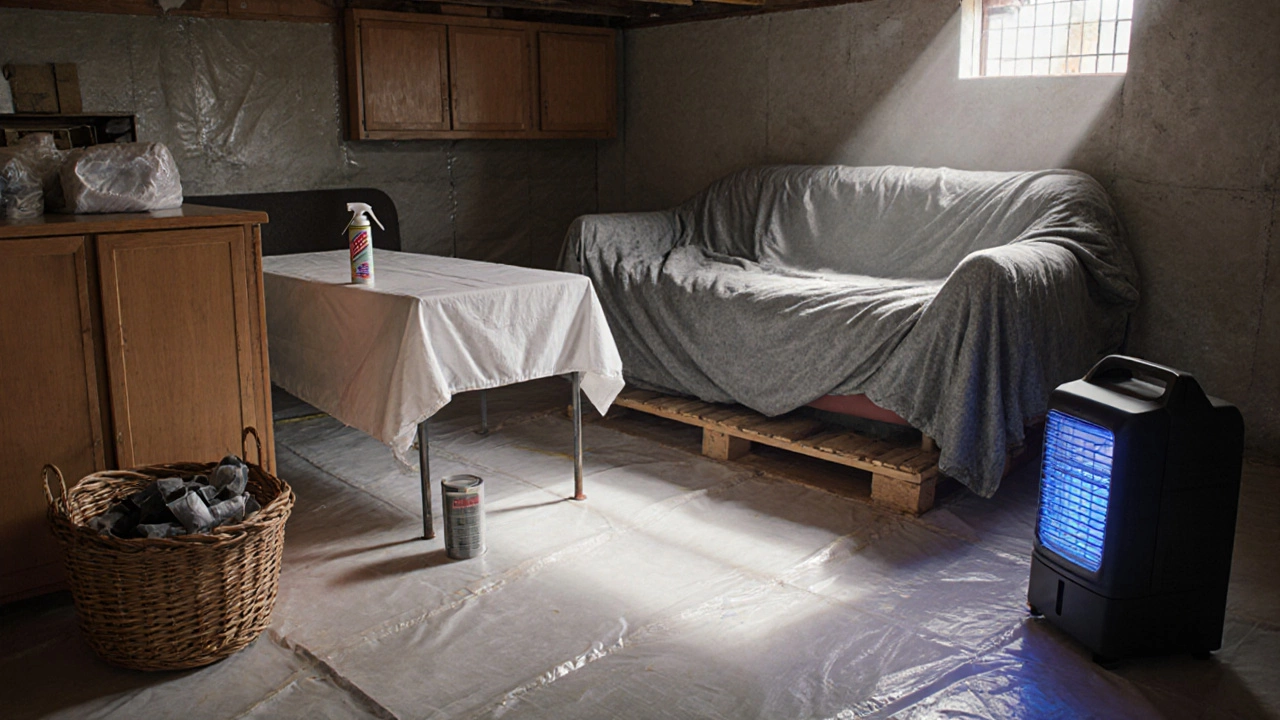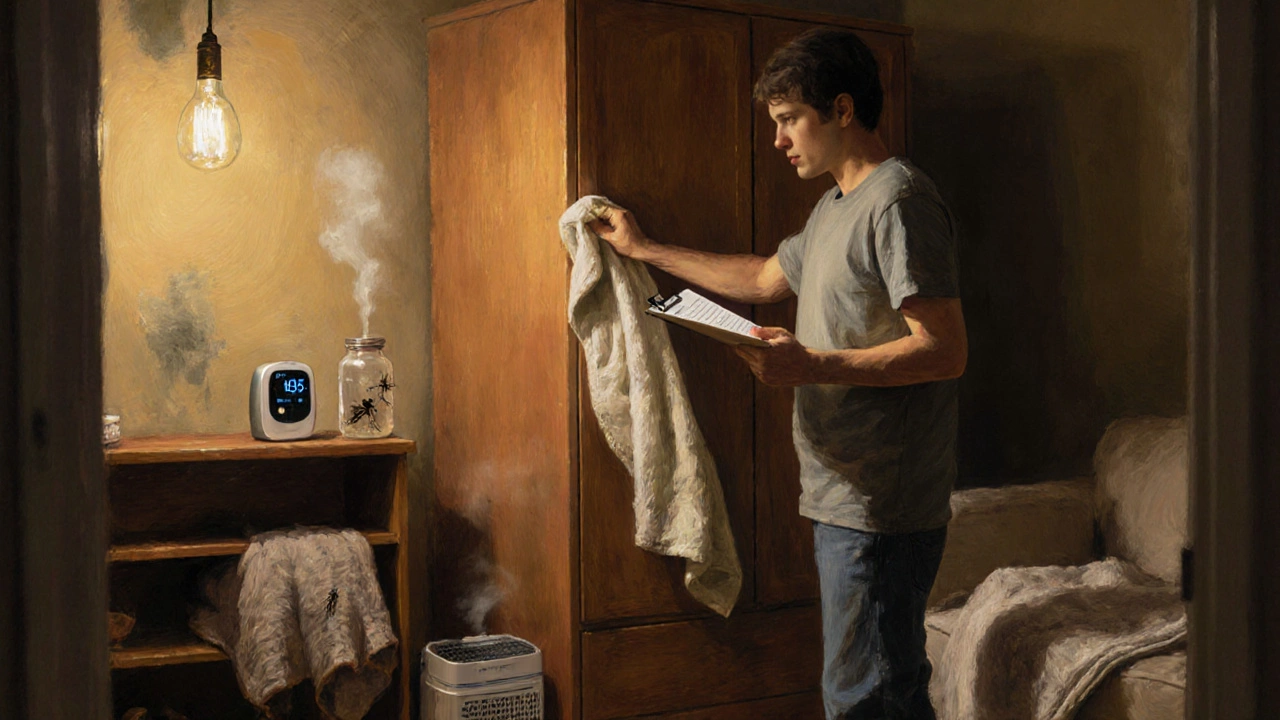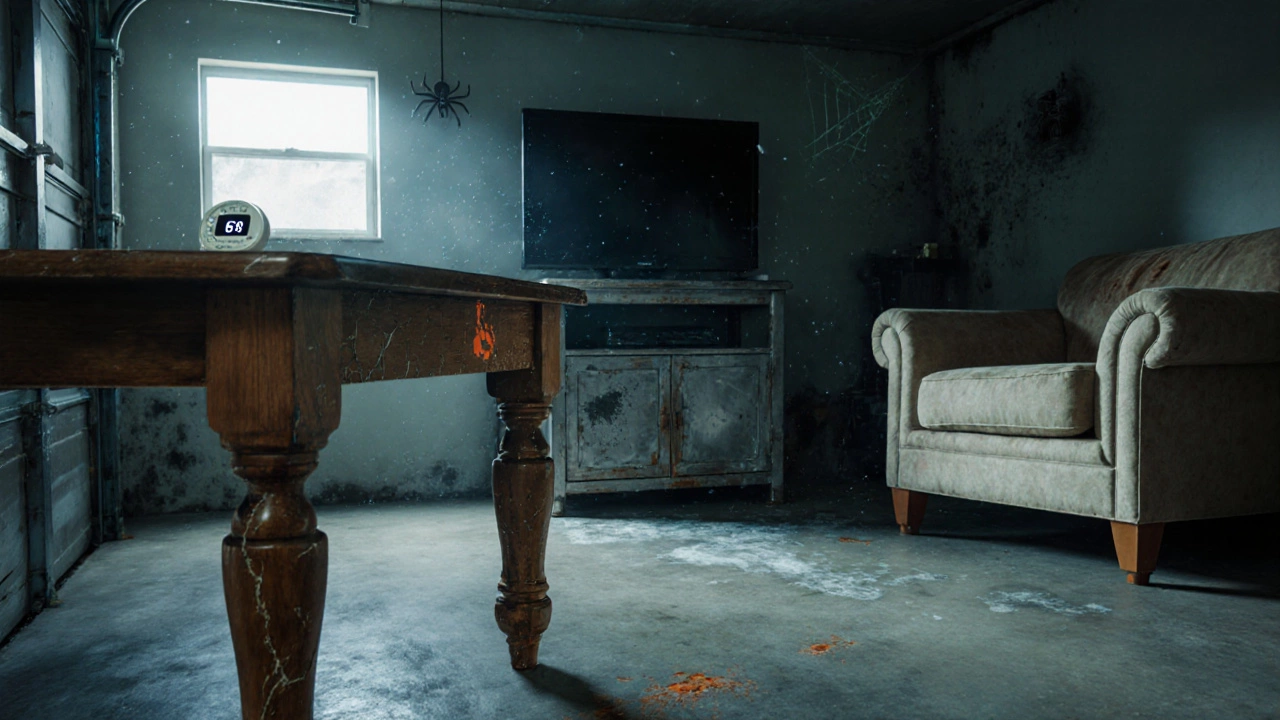Furniture Storage Risk Assessment Tool
Risk Assessment Result
Key Takeaways
- Control moisture by sealing items and using a dehumidifier or desiccants.
- Wrap each piece with breathable covers, then add a moisture barrier.
- Store heavy items on the floor and keep light pieces off the ground.
- Check the space weekly for condensation, pests, and temperature spikes.
- Use the right protection for wood, metal, and upholstery to avoid warping, rust, or mold.
Storing furniture in a garage, shed, or unheated basement can feel like a gamble. The space isn’t climate‑controlled, so temperature swings, humidity, and dust become real threats. This guide walks you through every step needed to keep sofas, tables, wardrobes, and even delicate décor in good shape until you bring them back home.
Furniture storage is the practice of protecting household items from environmental damage when they’re kept outside of a climate‑controlled living area often involves a mix of preparation, proper packing materials, and regular monitoring. Below, we break the process into clear jobs you’ll complete: understand the risks, prep the area, choose the right wrap for each piece, manage moisture, and set up a maintenance routine.
1. Understanding the Risks in a Non‑Climate‑Controlled Space
Before you start wrapping, know what you’re fighting.
Humidity refers to the amount of water vapor in the air, which can cause wood to swell, metal to rust, and fabric to mold is the biggest culprit in garages and basements, especially during Melbourne’s rainy winters. When humidity climbs above 60%, wood expands; when it drops quickly, it contracts, leading to cracks.
Temperature fluctuations are rapid changes in ambient temperature that can cause materials to expand, contract, or become brittle also matter. A summer heatwave can push temp to 30°C, while a cold night can dip to 5°C, stressing joints and adhesives.
Pests, dust, and direct sunlight are secondary threats. Termites love untreated wood, while UV rays fade upholstery dyes. Understanding these factors helps you pick the right protection methods.
2. Preparing the Storage Space
Cleaning and organizing the area before you bring anything in saves headaches later.
- Clear the floor. Sweep out dust, leaves, and any spilled liquids. Moisture sits on the ground, so a clean slab reduces mold risk.
- Lay a moisture barrier. Use heavy‑duty plastic sheeting (at least 6mil) to cover the floor where furniture will sit. Seal seams with duct tape.
- Ventilation matters. Keep the door slightly ajar or install a vent grille if possible. Fresh air helps keep humidity in check.
Optionally, place a few silica gel packets or moisture‑absorbing charcoal in corners. For longer stays (over three months), a portable dehumidifier is an electric device that pulls water vapor out of the air, maintaining a stable relative humidity can make a huge difference.

3. Protecting Different Furniture Types
One‑size‑fits‑all wrapping doesn’t work. Below is a quick guide for the most common pieces.
| Furniture Type | Primary Risks | Recommended Wrap |
|---|---|---|
| Wooden tables & cabinets | Moisture swelling, termite damage | Wrap in breathable cotton sheet, then a moisture barrier (plastic sheeting) |
| Upholstered sofas & chairs | Mold, dust, UV fading | Cover with a fitted furniture cover, then a moving blanket for padding |
| Metal frames & TV stands | Rust, condensation | Apply a rust‑inhibiting spray, then wrap in a moving blanket |
| Glass coffee tables | Scratches, condensation spots | Wrap in bubble wrap, then a blanket to keep dust off |
| Wardrobes & dressers | Humidity inside drawers, warping | Leave doors slightly ajar, line interior with silica packets, and cover exteriors with a blanket |
For each piece, the layering principle works best: first a breathable cover (cotton sheet, fitted slipcover), then a protective blanket, and finally a plastic barrier if you expect direct contact with the floor.
4. Using Moisture‑Control Tools Effectively
Even the best wrapping can’t fight severe humidity. Here’s how to supplement it.
- Silica gel packets. Place 5‑10 packets inside drawers, cabinets, and the hollow spaces of sofas. Replace them when they turn pink.
- Charcoal briquettes. Not the kind for grilling-use unscented, odor‑free briquettes in a breathable bag. They absorb dampness and odors.
- Portable dehumidifier. Choose a unit that can handle 30‑50pint capacity for the space size. Run it for 8‑10 hours a day during rainy periods.
- HVAC fan. If you have a small window, running a simple exhaust fan helps circulate air and lowers condensation risk.
Measure humidity with a digital hygrometer (readings at 40‑55% RH are ideal for most furniture). Keep a log; if readings stay high for more than three days, add more silica or run the dehumidifier longer.
5. Packing and Placement Strategies
How you arrange pieces affects how they breathe.
- Leave space between items. A 2‑inch gap lets air circulate, preventing trapped moisture.
- Heavy items on the floor. Sofas and wardrobes can handle a plastic‑sheeted floor, but keep wooden legs on a piece of plywood to avoid direct contact with any cold concrete that could cause moisture wicking.
- Upright versus flat. Store bookshelves and dressers upright to minimize surface area exposed to humidity.
- Cover corners. Use corner protectors (cardboard or foam) to stop dents on delicate frames.
- Label each piece. Write a short note (e.g., “Check for mold weekly”) on the outside of the cover so you remember special care steps.
For larger items like sofas, set them on a pallet to lift them off the floor. This prevents any condensation that may pool on the ground from seeping up.

6. Ongoing Maintenance Checklist
Storing furniture isn’t a set‑and‑forget task. A quick weekly routine catches problems early.
- Inspect moisture barrier for tears.
- Check hygrometer reading; adjust dehumidifier settings if needed.
- Look for any signs of mold, rust, or insect activity.
- Rotate blankets or reposition furniture to avoid pressure marks.
- Refresh silica packets or replace charcoal bags after a month.
Set a calendar reminder on your phone. A 10‑minute check saves you from costly restoration later.
7. Common Mistakes to Avoid
Even well‑meaning DIYers can slip up. Here are pitfalls to watch out for.
- Using airtight plastic only. Trapping humidity inside the wrap creates condensation, which accelerates mold.
- Skipping the breathable layer. Cotton or muslin lets any moisture evaporate slowly, protecting wood fibre.
- Storing items directly on concrete. Cold concrete pulls moisture from wood; always add a plywood sheet or pallet.
- Leaving furniture in direct sunlight. UV rays fade fabrics and crack finishes; keep pieces away from windows or use UV‑blocking film.
- Neglecting pest control. Set up a few pheromone traps to monitor for moths or beetles, especially for wooden wardrobes.
8. Pro Tips from the Frontline
These extra steps give you a safety net.
- Seasonal rotation. If you know the space will be hotter in summer, move the most moisture‑sensitive items (like antique wooden chests) to a cooler indoor closet for those months.
- DIY moisture‑absorbing sachets. Mix silica gel beads with a few drops of lavender oil, seal in a breathable cloth bag. It works and leaves a fresh scent.
- Use a climate‑log app. Some smartphone apps sync with Bluetooth hygrometers, sending alerts when humidity exceeds your threshold.
- Invest in a quality moving blanket. Thicker blankets (12‑mm) provide better insulation against cold and dampness compared to thin ones.
- Document before and after. Take photos of each piece before storage; if damage occurs, you have proof for insurance claims.
By following these steps, you’ll keep your furniture looking fresh, functional, and ready for the day you bring it back home.
Frequently Asked Questions
Do I need a dehumidifier for short‑term storage?
If you’re storing furniture for less than a month and the space stays dry (under 55% RH), silica packets and good ventilation are usually enough. For longer periods, a small dehumidifier prevents slow moisture buildup, especially during winter rains.
Can I use regular household trash bags as a moisture barrier?
Heavy‑duty, 6‑mil plastic sheeting works best because it’s thicker and less prone to tearing. Thin grocery bags can puncture easily and won’t protect against ground moisture.
What’s the best way to protect metal legs on a dining table?
First, coat the metal with a rust‑inhibiting spray. Then wrap the legs in a moving blanket and finally place the table on a plastic‑sheeted pallet. This three‑layer approach stops rust and cushions any bumps.
How often should I replace silica gel packets?
When the beads turn pink, they’re saturated and need re‑charging. You can dry them in an oven at 120°C for 2hours, or simply replace them if re‑charging isn’t convenient.
Is it safe to stack furniture on top of each other?
Only if the bottom piece is sturdy and you protect the top with a blanket or cardboard to avoid scratches. For heavier items, keep them separate to prevent crushing.

